
In this article we have combined the three famous and main attractions of Rome. We united them according to the principle of a nearby location to each other. Or rather, not location, but concentration around one famous Roman square - the square of Venice.
It is Venice Square that acts as the basis and connecting link for all other objects, they are located around it, on it. In addition, it is impossible to consider each attraction individually, since only all the objects in the osprey make up the invariable and so beautiful palazzo of Venice.
But, everything in order. So
Roman Piazza Venezia square is called Piazza Venezia (Piazza Venezia) and is a famous and large square located in the heart of the Italian capital. It is in this area, as a rule, originate all sightseeing tours of Rome, also it is at the forefront of the major and most memorable attractions of Rome. Piazza Venezia gives his beginning of the main streets of Rome.
The square is located at the foot of the Capitoline hill near the Roman forum and the Colosseum, and in walking distance from the main train station Roma Termini (Roma Termini).
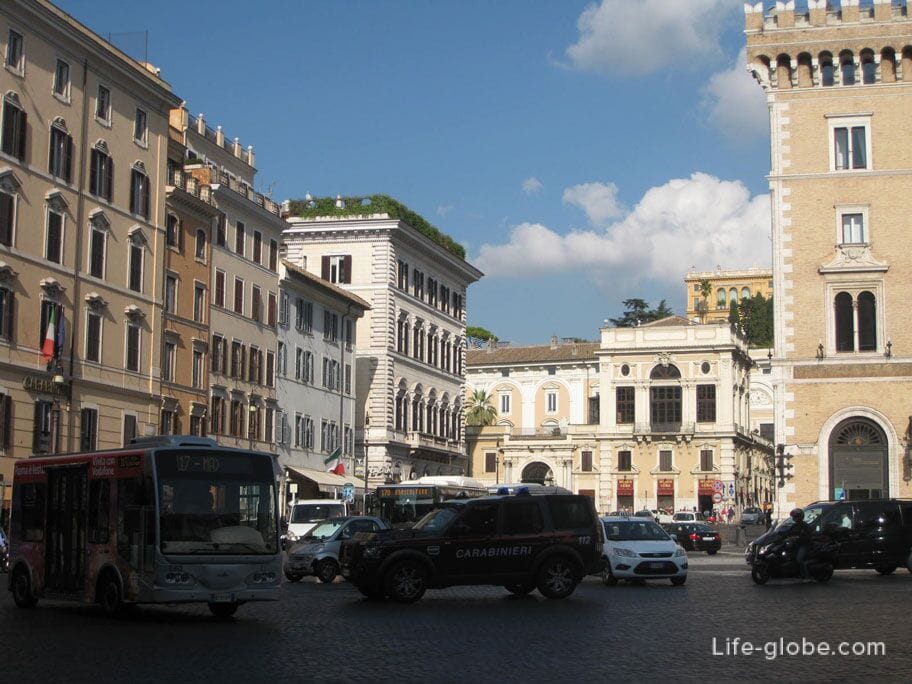

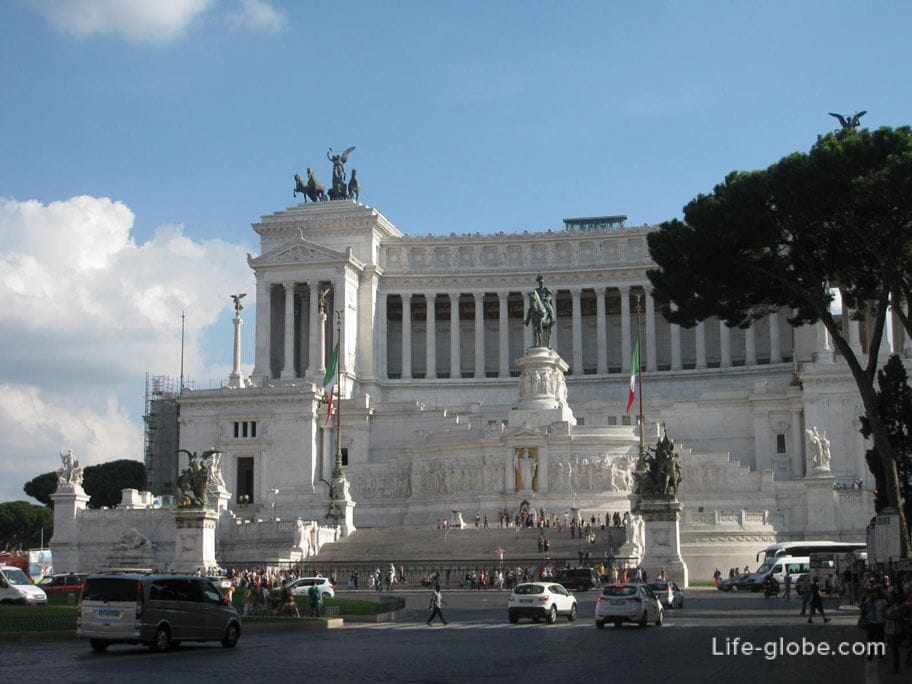
This square is called Palazzo Venice for a reason. It was here, in the fifteenth century, the Venetian cardinal Pietro Barbo (later Pope Paul II) built a Palace, where, after 1567 housed the Embassy of the Venetian Republic. So, thanks to the Embassy of Venice, the area got its name. And it's not unique to Rome, so Rome has Spain square, which got its name is also due to the fact that the square was located and hosted at the Spanish Embassy.
In the square itself is nothing special. Perhaps tourists would come to her side, and a list of attractions would put Piazza in the last series, if not one but... here, in the center of the square, is a beautiful and somewhat unusual in its architecture monument, erected in honor of first king United Italy Victor Emmanuel II.
Vittoriano (Italian title Vittoriano), this is the monument in honour of king Emmanuel II, serving as a symbol of the United Italy.
This Palace, if you can call it that, but we are going to call it that way, because he is too similar to a small Palace or cake. So, it is this Palace, and not square is so striking and impressive.
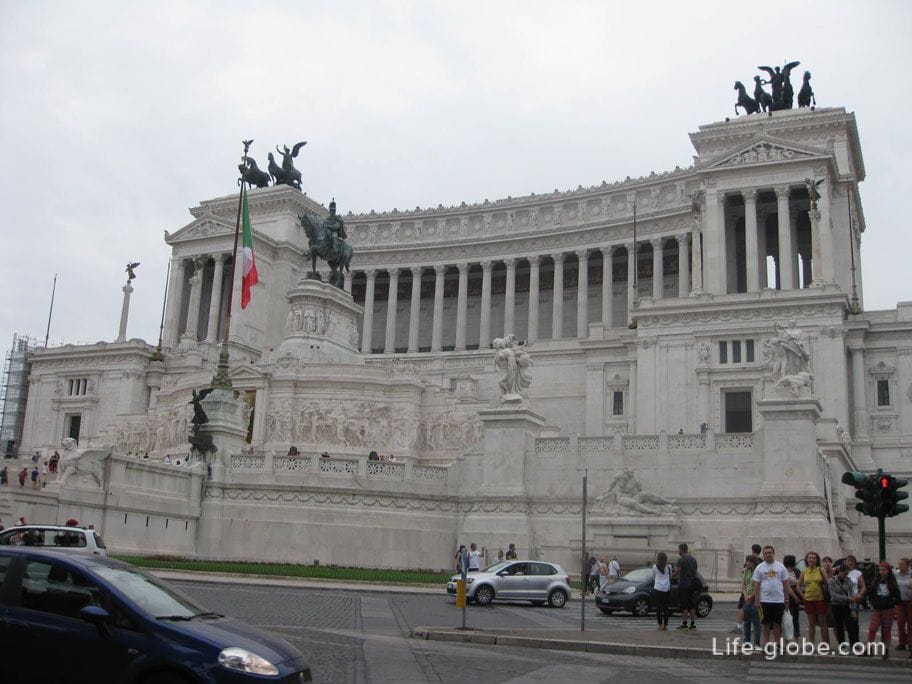
The project Vittoriano was designed by the Italian architect Giuseppe Sacconi in the style of late classicism and the spirit of ancient Roman architecture. Construction of this magnificent building began in 1885 and continued to 1935 inclusive.
The main and Central part of the monument, which is unchanged decoration of the Monumento a Vittorio Emmanuele II, is dvenadtsatimilnuju bronze equestrian statue of king Victor Emmanuel II. The statue of the Victor rises majestically above the Central staircase.
The creators of the monument, did a good job, perhaps too overdone. Sometimes you look at the statue and gives the impression that the monument is simply cluttered with details and decorations that frame the bronze equestrian statue of the king. Various statues, columns, bas-reliefs and other patterns give the monument a luxury that seems excessive. Even among the Romans themselves go to a different condescendingly contemptuous name given monument, the most famous of which are: "the typewriter", "Wedding cake", "False teeth" and other.
While on the other hand maybe it is these details and attract the eye, making the Vittoriano and Piazza so special.

The statue is also called the Vittoriano "the altar of the Fatherland" (Altare della Patria). The second name of the statue was due to the fact that at the foot of the equestrian statue is the grave of the unknown soldier. At the grave constantly on duty a guard of honor.

In General the architecture of the entire Palace has many decorative elements, columns and monuments from which to receive such colorfully-idle view.
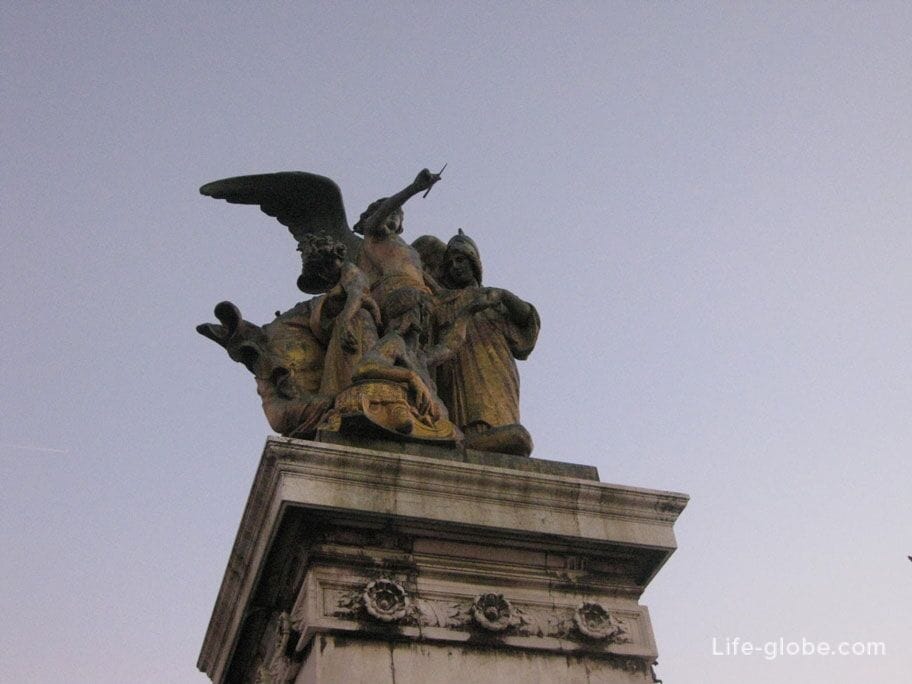
In the evening when it gets dark, the Vittoriano is highlighted by soft lights, what immodest pretentiousness is smoothed and the Palace looks even more beautiful than in the daytime.
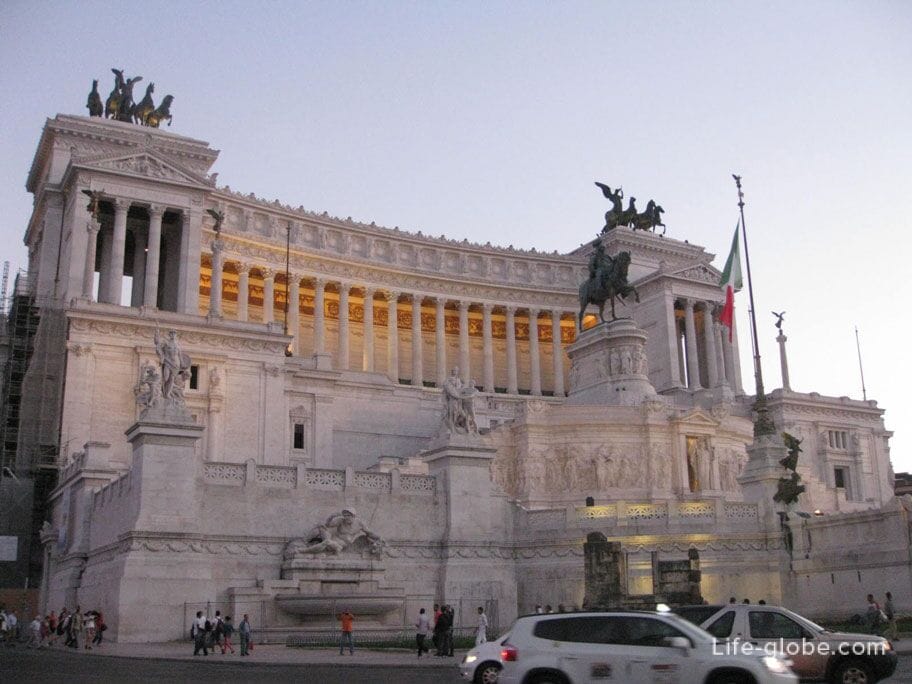
In the Vittoriano hosts two Museum of the Risorgimento and of the banners of the Navy. Free admission, open to visitors in the daytime.
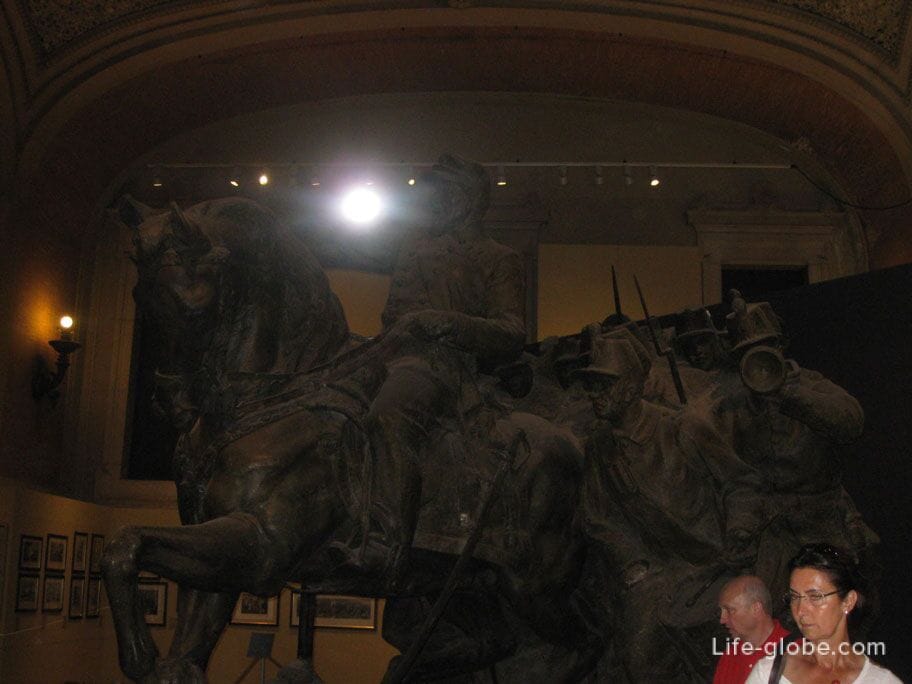
So the area of Venice looked like in the 1930-ies
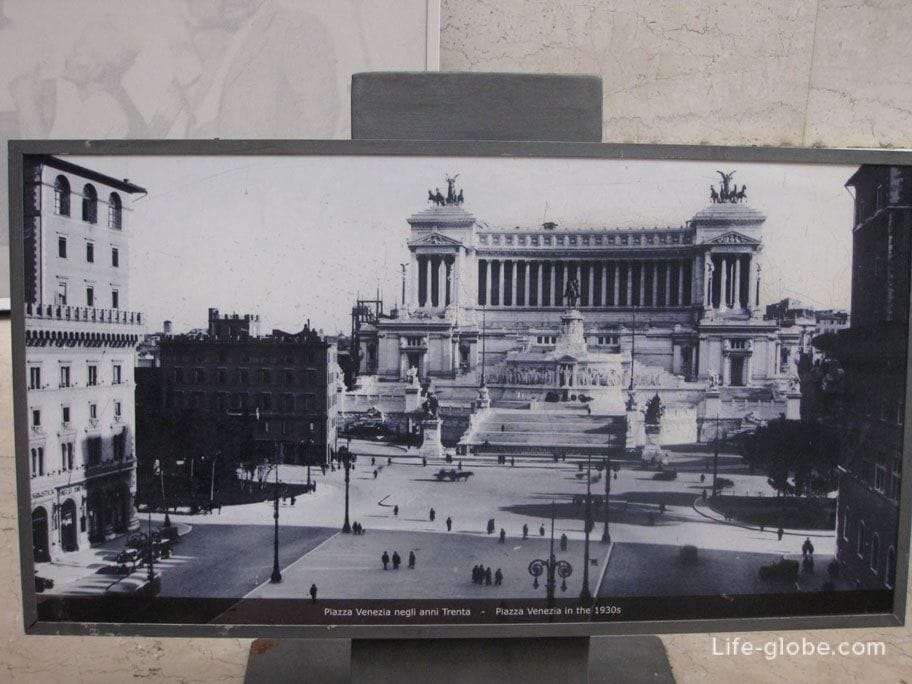
On the territory of the Vittoriano, in addition to the theatre, observation deck and a cafeteria. From the observation deck - Terrazza delle Quadrighe, offers a good panorama of the surrounding neighborhoods of Rome.

View of the forum of Trajan
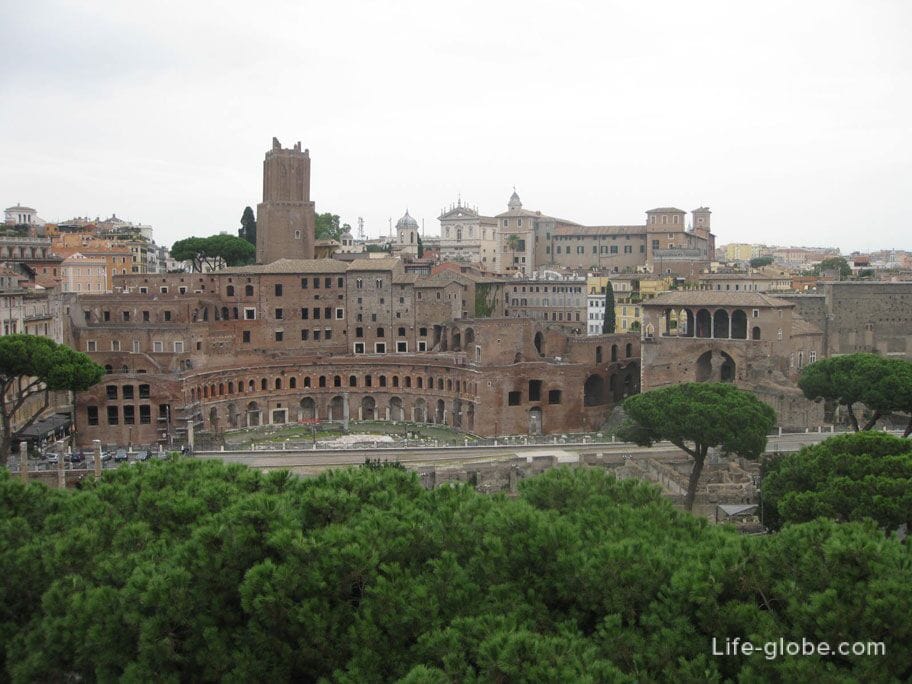
We are on the lookout. Just happy
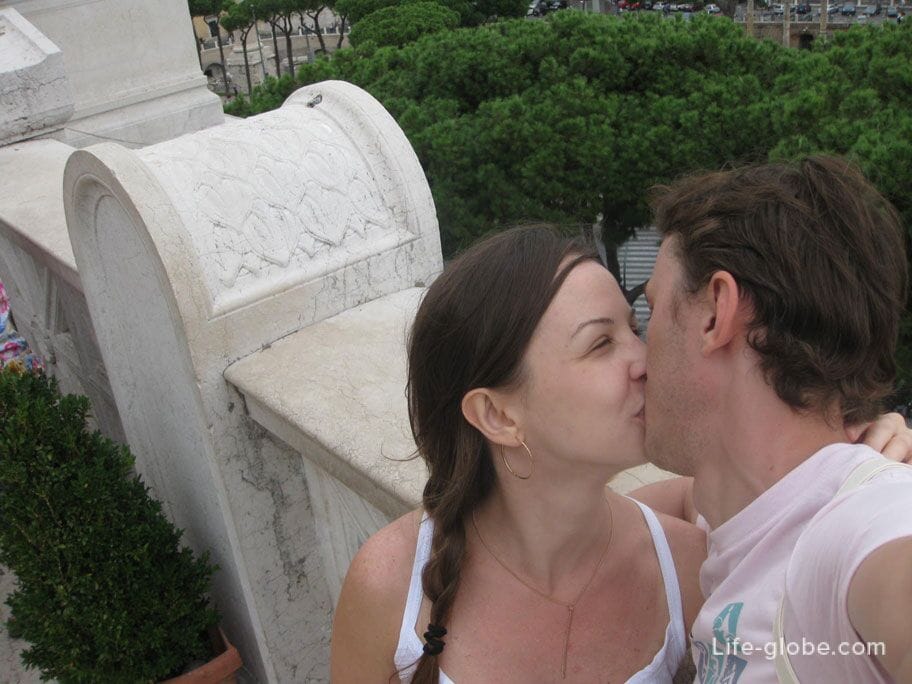
In Piazza Venezia is also situated the Palace of Venice, aka the Embassy of Venice and the Bank of Venice, in whose honor and named the area.